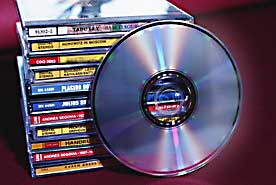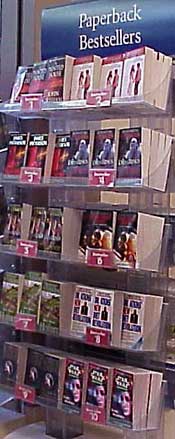The Print Media |
|
Books
The Audience for Books Two-thirds of books are purchased by people over 40 years of age. Readers under 25 account for only four percent of book sales. In all age groups book reading is strongly related to income and education level. As the population shifts toward older people, we may see a proportional increase in book sales. But, the Internet may also have an impact here. Computer use Many older readers have grown tired of television, and in some cases are reluctant to venture out of the safety of their homes to travel to a bookstore or library. Although not too many books have large type versions, the type on computer screens can be made large and easy to read. Even so, as we've noted, Internet books have not "caught on" as yet. Not only do we need a few more innovations, such as broadband, which will allow real-time video and audio components, and higher resolution screens, but like most innovations, they just "take some getting used to." The new tablet-type computers, which are becoming popular, may be significant in this, as well as Wi-Fi, the high-speed, wireless Internet access, now available in locations such as StarBucks coffee houses. But, many people resist innovation. For example, when high-fidelity audio was introduced, many people didn't like it. Although for the first time it reproduced the full range of audio present in the original musical performances, to many people hi-fi "just didn't sound right." And, speaking of audio....
Not as much of an open question is the success of talking books--versions of popular books that are abridged and recorded by authors or actors on audio tapes and CDs. People who must spend many hours driving can pass the time by listening books on tape. Recorded books are also popular with people with limited eyesight. Today, talking books are one of the most popular items at libraries. Another popular outlet for One major advantage of the CD-ROM this is that the computer’s powerful search and cross-referencing capabilities can be utilized to quickly locate information. Film clips, animation, and audio segments are also possible.
With only about 75,000 workers nationwide, book publishing is At the same time, many jobs are being "farmed out" by publishers to fee lance people who work out of their homes as sales representatives, proofreaders, indexers, artists, and photographers. The work of photographers (who used to get several hundred dollars for a photo assignment) is being replaced by large stock photo agencies that have huge catalogs of ready-to-use photos. Typesetters are often located in foreign countries where labor is cheap. The Internet ties things together in each case. As a free lance worker you may have the luxury of setting your own hours, working out of your home, and not having to commute to work; but, at the same time you generally can't depend on a regular monthly income, or company-sponsored medical and retirement benefits. Like most of the mass media fields, the book publishing industry is highly competitive. But, those who are talented, dedicated, and persistent can find jobs. In the case of book publishing this talent consists of a love for books and literature, and an understanding of public tastes and marketing. Historical Chronology
Relevant Internet links:
In the next module we'll look at newspapers. |
|
|
|
To next module To
index © 1996 - 2005, All Rights Reserved.
|

 among the older people is growing rapidly. Many senior citizens are on fixed incomes, and with cost of books averaging $45 for a hardback and $7.00 for a paperback, Internet versions may start to look more and more attractive.
among the older people is growing rapidly. Many senior citizens are on fixed incomes, and with cost of books averaging $45 for a hardback and $7.00 for a paperback, Internet versions may start to look more and more attractive.  the content of books is the CD-ROM. Along with textbooks and popular book titles, reference works such as dictionaries or encyclopedias can be put on a single disk, and read on a computer.
the content of books is the CD-ROM. Along with textbooks and popular book titles, reference works such as dictionaries or encyclopedias can be put on a single disk, and read on a computer.  actually a rather small industry. Competition for jobs, especially in the editorial side, is great.
actually a rather small industry. Competition for jobs, especially in the editorial side, is great.